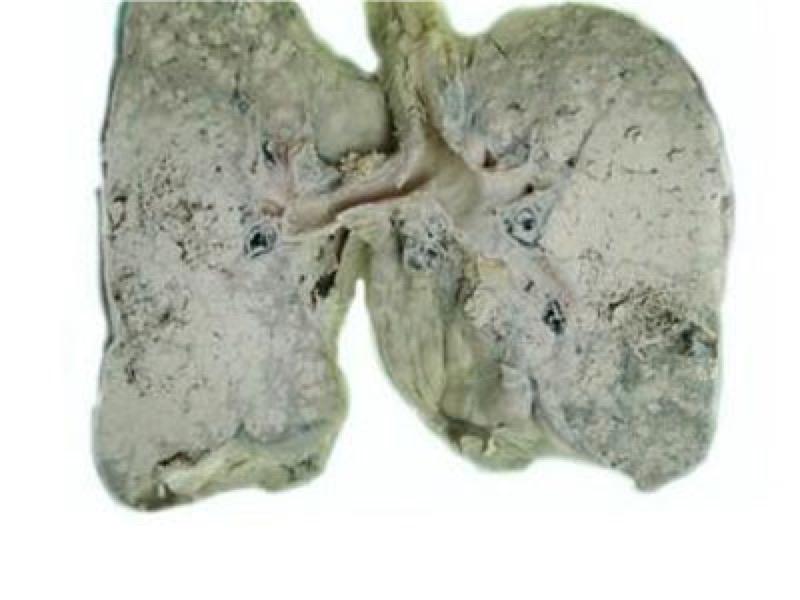Is large cell neuroendocrine lung cancer serious?
Lung cancer is the cancer type with the highest tumor morbidity and mortality in the world. Lung cancer is mainly divided into non-small cell lung cancer (NSCLC) and small cell lung cancer (SCLC), non-small cell lung cancer accounts for about 85% of lung cancer. The proliferation and expansion of small cell lung cancer and non-small cell lung cancer are completely different, and the treatment measures are also different. Is large cell lung cancer serious?

Types and corresponding characteristics of lung cancer
Small cell lung cancer (NSCLC)
1. Features of lung adenocarcinoma:
Adenocarcinoma accounts for 40% of all types of lung cancer, and approximately 55% of non-small cell lung cancer ;about. This proportion will be higher among Asian non-smokers.
Adenocarcinoma contains many subtypes such as acinar adenocarcinoma, papillary adenocarcinoma, bronchioloalveolar carcinoma (BAC), solid adenocarcinoma and various mixed types. Among them, bronchiolar lung cancer originates from alveoli and tends to grow slowly. Compared with other NSCLC metastases, BAC is often considered to be a subtype with better prognosis.
Tumors often occupy space around the lungs.
Commonly mutated genes are EGFR, ALK, cMET, ROS1, HER2, KRAS, etc. It is also the cancer type with the most targeted drugs at present. The probability of EGFR gene mutation in Asian non-smoking female patients is as high as 50% available drugs are gefitinib, erlotinib, icotinib; ALK mutations can be targeted drugs crizotinib, color Retinib, Alectinib, etc.
2. Characteristics of lung squamous cell carcinoma:
The incidence of squamous cell carcinoma has decreased in the last 30 years, but smoking is a common subtype. It is more common in male patients and often occurs in the larger airway, so it is often occupied in the center of the lungs. Under the microscope are large, flat cells. Keratin is often produced, which can be observed under a microscope, and blood detection of keratin is also a monitoring indicator.
Squamous cell carcinoma in the United States accounts for about 25%—30% of the total number of lung cancers, including papillary squamous cell carcinoma, clear cell squamous cell carcinoma, small cell squamous cell carcinoma, Basal squamous cell carcinoma.
Squamous cell carcinoma metastasis is sometimes later than other non-small cell lung cancer subtypes, often invading adjacent tissue structures.
accounts for approximately 25% of the total number of lung cancers. Common gene mutations include FGFR1, STK11, SOX, PIK3CA, DDR2, PDGFRA, MDM2, etc. The targeted drugs for squamous cell carcinoma are in clinical stage , Recently approved PD-1 immune point inhibitors, nivolumab and pembrolizumab, but the price is expensive.
3. Features of large cell carcinoma:
accounts for about 10%-15% of non-small cell lung cancer. Large cell carcinoma contains several subtypes, such as clear cell large cell carcinoma, basal cell-like large cell carcinoma, lung lymphoid epithelioma-like carcinoma, and lung large cell neuroendocrine carcinoma.
under the microscope is shown as highly undifferentiated or immature large cells.
can occupy any part of the lungs, without the tendency of surrounding or centering.
Compared with other non-small cell lung cancer subtypes, the prognosis is often not particularly good.
Large cell lung cancer currently has no particularly effective targeted drugs. There are reports in the literature that EGFR mutations are effective for gefitinib, and cross-indications for gene mutation testing can be considered.
Second, small cell lung cancer
Characteristics of small cell lung cancer:
accounts for about 15% of the total number of lung cancers, with a high degree of malignancy and limited treatment measures At present, there are no approved targeted drugs, and initially responded well to chemotherapy and radiotherapy.
The occurrence of small cell lung cancer is closely related to smoking, and only 1%small cell lung cancer is not related to smoking.
grows and spreads faster than non-small lung cancer and tends to metastasize early in the disease. Most patients already have metastases at the time of diagnosis.
tends to occupy a larger airway, so small cell lung cancer is often located in the center of the lungs.
The staging of lung cancer is based on whether the tumor is localized or has metastasized to lymph nodes or other tissues and organs. The occurrence of lung cancer takes more than ten years. Even if some symptoms of lung cancer such as coughing and fatigue have occurred, people often think that it is caused by other reasons, so it is difficult to find early lung cancer (stage I and II).
Related Articles

- Early symptoms of lung cancer
- 2020-12-17

- Early Signs of Bladder Cancer
- What are the early symptoms of bladder cancer?
- 2020-12-17

- Is metastatic carcinoma easy to metastasize
- Once the cancer has metastasized, it will be very difficult to cure, because many people have lost their lives because of the emergence of cancer, so most people think that cancer is an un
- 2020-08-02

- What does microinfiltrating adenocarcinoma mean?
- Microinfiltrating adenocarcinoma is a type of lung cancer. The reason why it is called microinfiltration means that there is less infiltration around it, which means that it is in the early
- 2020-08-01

- How long can non-small cell adenocarcinoma live
- Adenocarcinoma is one of the most common malignant tumors in the world. Non-small cell adenocarcinoma accounts for about 80% of all adenocarcinomas. About 75% of patients are in the middle
- 2020-08-01

- Hand cancer
- Finger cancer generally refers to the appearance of skin cancer, which is characterized by local cauliflower-like skin and easy bleeding. Finger skin cancer is mostly a malignant tumor that
- 2020-08-01
